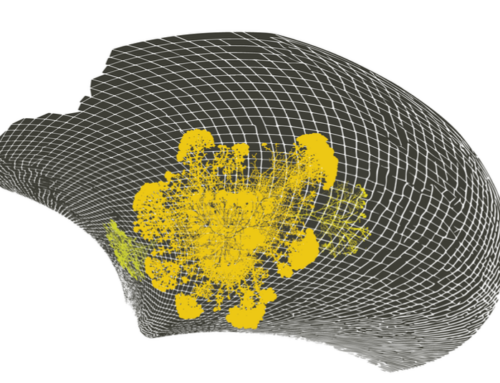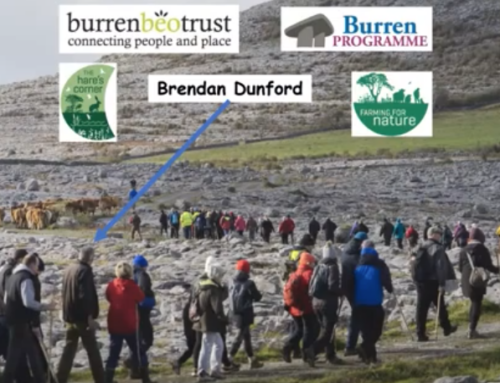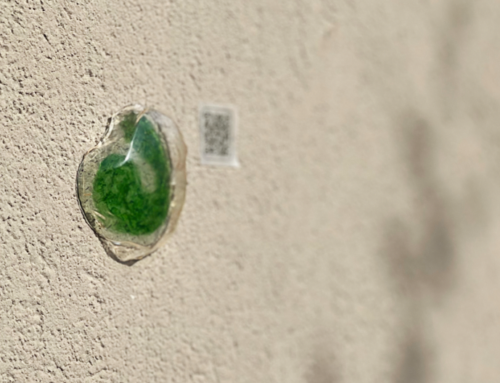Up to 1,500 litres of that water are needed to grow enough biofuels to move one car ten kilometres. 2,000 litres are needed a day to feed each one of us. It takes 140 litres of water to grow enough beans for a single cup of coffee.
It sounds, and is, unsustainable. Over-exploitation impacts heavily on the quality and quantity of remaining water, and on the ecosystems that depend on it. And it’s not just a problem for arid climate areas. Water stress is also increasing in large parts of the rainy north.
Two years ago, when Banny Banerjee and myself ran a design clinic on the theme of off-grid water at Stanford University, we focused on entrepreneurs in the Palo Alto region who were developing tools to help citizens manage water sustainably.
One such tool, the Rainwater Hog, had won lots of prizes, but its designer and producer, Sally Dominguez, wanted our advice on the best way to translate celebrity into sales.
Despite the fact that global water consumption is increasing at twice the rate of population growth, and has become a crisis issue in many countries, our design teams at the clinic were told that people in Southern California will pay better money to save their house from fires, than to save the planet.
We therefore ended up advising Saly Dominguez to re-brand her product offering as an on-site emergency water supply to be used in the case of bush fires.
That experience highlighted a key dilemma about water: if sustainable practice requires people to spend significant sums of money on green products, then even the well-off will probably balk. The 95 per cent of citizens who are not rich, will be excluded from the start.
Another dilemma: there’s a bid difference between concocting design solutions in a studio, and implementing them – literally – on and in the ground.
] From hard to soft
Solutions to the the water crisis must also confront the fast-conveyance ‘hard’ drainage infrastructures – conceived of in Roman times – that we’ve built to eliminate unwanted, highly-polluted runoff and sewage.
Over centuries, we have designed and built rapid-transit conveyance piped systems to keep land relatively dry, provide a supply of portable water, and use water to carry away human waste for disposal.
To this day, many billions of dollars are spent annually on costly “hard” solutions like sewers and treatment plants. The results are urban landscapes in which rigid stream channelization, and a preference for impervious over porous surfaces, dominates.
Hard surfaces are usually bad for the water systems they obscure from our view. One measure of watershed health is the amount of man-made impervious surface area (ISA) covers it: roads, parking lots, buildings, driveways, sidewalks and other manmade surfaces.
China has more ISA in total than any other country, but the amount of paved surface per person is only quarter the area per person [67 m2] / 722 square feet] compared with the USA [297 / 3,200].
The total amount of ISA in the world looks tiny as a number – less than half of one percent – but most ISA is found in the primary drainage basins where the greatest damage to watersheds occurs.
Hard water systems have not just been integrated into buildings and streets. As Glen Daigger, president of the International Water Association, points out, a hard engineering paradigm is also embedded in our public regulations, our educational systems, our professional institutions.
It is not a small ask, after one thousand year’s of such progress, to persuade elected officials, city managers, public health inspectors, designers and citizens, that ponds and vegetation, natural stream courses, buffers and floodplains, are now a sign of urban health. Says Daigger, ‘it’s a complete change to the functional purposes we want our infrastructure to accomplish’.
It’s a hard ask, but a transition from strictly engineered systems to ecological systems like rain gardens, surface wetlands, restored ponds, and daylighted streams does seem to be happening. The entire water economy is beginning to focus on ‘softer’ approaches in which closed loop water supply systems are configured, in an integrated fashion, to recover and recycle water, and be net energy producers.
Water professionals now talk about urban landscape and drainage systems designed to mimic the natural hydrological cycle. They aspire to recharge aquifers with reclaimed rainwater, and to return the base and flood flows of streams to their pre-development levels.
The idea now is to integrate utility and land-use decisions to improve water- use efficiency, increase the capture and storage of rainwater, lower overall energy consumption, and reduce pollutant discharges – and to do all this whilst restoring natural ecosystems,.
Even the Dutch – the world’s most accomplished water engineers – are learning to live with water rather than fight it.
For more than 1,000 years the natural river basins of the Rhine and Meuse rivers were controlled by engineering works.
Toine Smits, professor of Sustainable Management of Natural Resources at Nijmegen University, says that their new approach is work with the natural dynamics of the river basin whenever possible, and adapt land use accordingly. As a result flood plains are being given more space and restored.
A large water equipment industry tends to focuses on the development of technological improvements such as advances in membranes and other engineered components of urban systems.
But the new approach the the design of cities – and the water management, treatment and delivery systems that serve them – is not principally a technology problem.
‘Water issues are complex and not subject to readily defined solutions because of the multiple and often competing values held by various stakeholders’ Glen Daigger explains. For a city to become water-wise interaction with other infrastructure systems needs to be orchestrated: biowaste, biogas, heating and cooling, transport, fibre optic communication. The city’s water behaviour must also be ‘designed’ in the larger context of surrounding land (agriculture and food production, energy, aquaculture, recreation).
Some new equipment is needed in this “new water paradigm” . Rain water tanks like the Hog mentioned above; large bladder storage systems, grey water plumbing; simple cleaning systems such as settling tanks, physical filters, reed beds, worm colonies; smart sensors for systems monitoring; new systems for maintenance.
] Green work
But equipment is just part of the solution – and with budgets at local and state level under extreme pressure, costly engineering solutions will remain hard to realize.
What’s needed most is action on the ground – house by house, street by street.
This is where the idea of green jobs makes immediate sense. Many local economies in the US once depended on the Real Estate Industrial Complex; by 2006, had grown to 43% of all private sector US jobs. As that economy has collapsed, huge numbers of people have lost jobs building MacMansions and their support infrastructures.
Could those people help the new water paradigm become a reality?
Tucson, Arizona, is quickly distinguishing itself as one of the leading cities in the promotion of water conservation, specifically water harvesting practices. With only twelve inches of rainfall per year, residents are learning to make the most of their scarce water supply.
In the forefront of this movement, grassroots groups, non-profit organizations, businesses, and the city government are promoting water harvesting through educational programs, city policies, demonstration sites, technology innovations, and green job training.
One pioneering non-profit organization is the Watershed Management Group. The company started as a tiny seedling of an idea in the minds of five students graduating from the University of Arizona’s Watershed Management program. They noticed that much of the focus of environmental programs, such as water management, is directed at rural areas and protected parks and wilderness areas. This became their focus.
Through it’s co-op programme, WMG helps homeowners harvest rainwater on their own properties at minimal cost. The way it works is that a homeowner joins the co-op, volunteers their time on other water harvesting projects, and accrues a set number of hours. When a volunteer accrues enough hours, they get to host a workshop at their own house and reap the benefits of the team’s labour.
Between six and 15 people are involved in a typical workshop, including at least one expert staff member. Having started four years ago, WMG expects to do up to 50 workshops this year.
Water harvesting practices are simple, low-tech practices that conserve water, improve water quality, reduce flooding and erosion, and promote revegetation. WMG now has 12 demonstration sites where citizens can see water harvesting practices in real-life contexts. implementation.
WMG is also now developing its own Watershed Technical Trainings in Green Infrastructure, Advanced Cistern Applications, Advanced Greywater Applications, and Small-scale Erosion Control and Riparian Restoration.
WMG’s Water Harvesting Certification Program, for example, with its emphasis on integrated and sustainable design,teaches architects, landscapers, planners, entrepreneurs, educators, and community organizers how to retrofit residential and commercial sites with greywater systems, water harvesting earthworks, appropriate plants, and cisterns.
This intensive course blends both informational lectures and hands-on workshop practice. Theory covered in class is accompanied by 30 hours of field experience.
Right now WMG runs four courses a year but applications are starting to arrive from right across the US. WMG’s director, Lisa Shipek [below] tells me that WMG has launched a series of Green Infrastructure webinars.
Green Infrastructure refers to constructed features that use living, natural systems to provide environmental services, such as capturing, cleaning, and infiltrating stormwater; creating wildlife habitat; shading and cooling buildings; and calming traffic.
The next WMG webinar on Community-Driven Green Infrastructure will take place on April 27, 2011 from 4:00 – 5:30 PM (PST)
The design and implementation of such practices varies widely among communities depending on geography, climate, existing urban infrastructure, and local policies. The goal of the webinar series is to share various approaches to green infrastructure with anyone interested in implementing similar strategies in their own communities.
It’s not a matter of top-down versus bottom-up. We need both. But the co-op strategy of WMG is an important innovation because it answers the challenge of turning good ideas into work getting done.
Robin Murray, who is writing a book about next generation cooperation, says co-ops provide a structure that is open to collaborative volunteering. Programmes particularly suited to co-operative development – health, leisure, education and the many branches of care – can be greatly enhanced by a mix of paid labour and volunteers.
Meanwhile, back in California, interest in water harvesting seems to be growing. The Ecology Center, located in San Juan Capistrano, has launched a Community Water Challenge as a platform to support community participation in the implementation of watershed specific solutions.
Water solutions, practices and projects also feature prominently in a new d-i-y handbook from The Ecology Center called Backyard Skills.
The WMG webinar on Community-Driven Green Infrastructure will take place on April 27, 2011 from 4:00 – 5:30 PM (PST)














